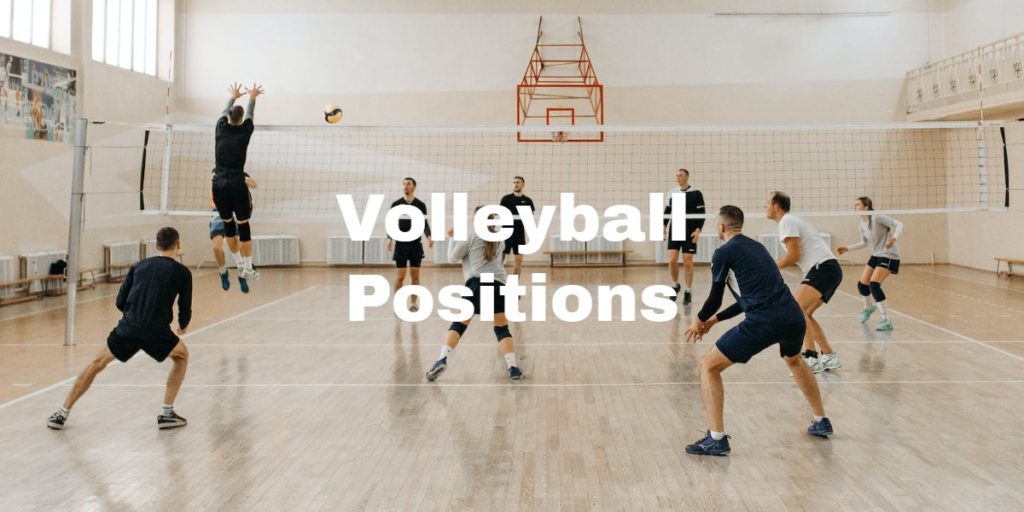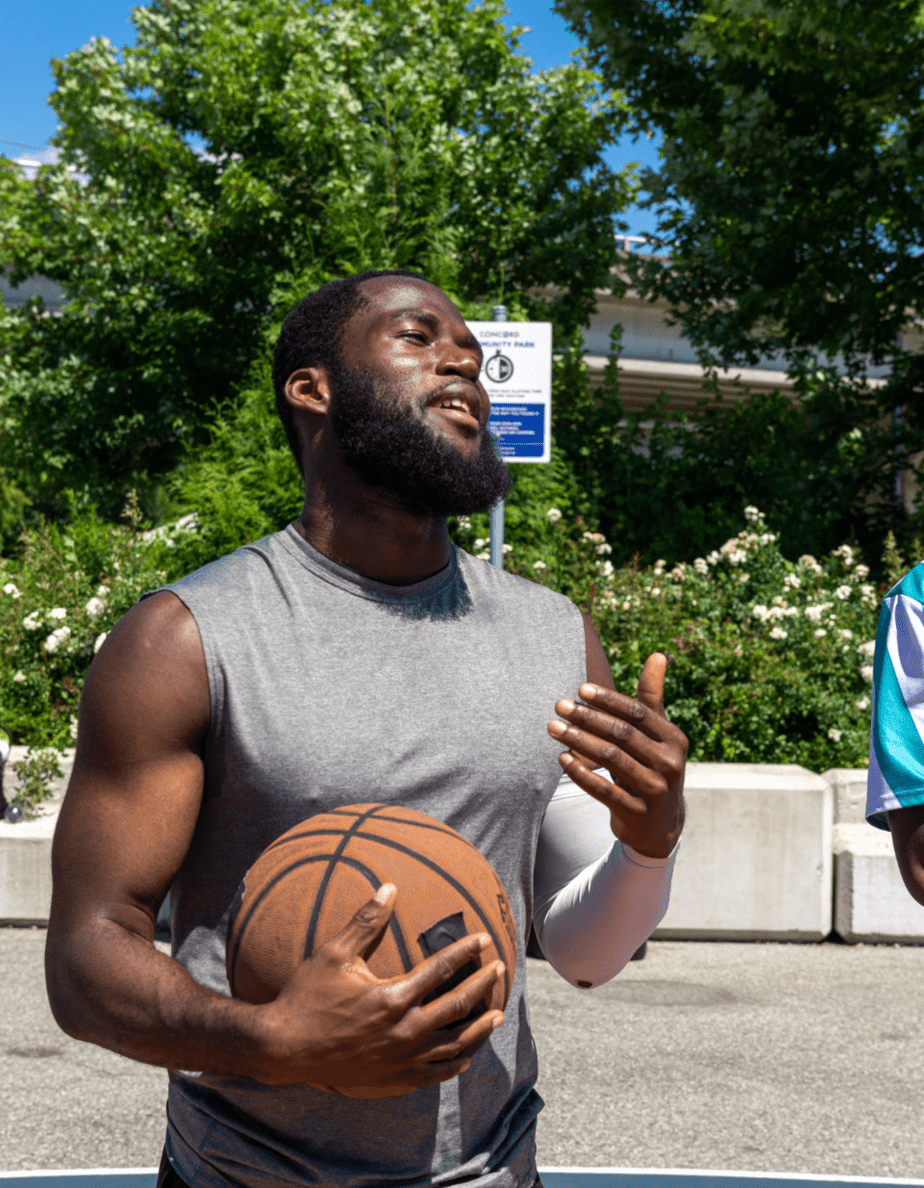Volleyball Positions: Setter, Outside Hitter, Opposite Hitter, Middle Blocker, Libero and Defensive Specialist Roles on the Volleyball Court
I have had to be a quick study of Volleyball. My 12-year-old daughter enjoys playing and I want to keep her in the game. Because competitive Omaha Nebraska area volleyball programs are so intense and expensive I started to consider developing my own program for my daughter. But, I had to start at the basics since I had a novice-level understanding of the sport. First, I needed to understand each of the 6 volleyball positions. I am going to share what I learned about the six main positions and their respective roles, along with the often-overlooked serving specialist. Hopefully, it will help you if you find yourself in a similar position with your son or daughter.
Setter: The Volleyball Maestro
As the “quarterback” of the volleyball team, the setter runs the offense, much like how I run from any hint of cardio. Setting is an art form that requires a combination of precise ball control, quick decision-making, and effective communication.
Some famous setters like Karch Kiraly and Nootsara Tomkom have displayed extraordinary skills in running their teams’ offenses, and their techniques are worth studying. But don’t worry, you don’t have to be an Olympic-level athlete to master this role; just focus on practicing your skills and coordinating with your teammates.
Outside Hitter: The Spiking Sensation
The outside hitter is the primary attacker, and their job is to score points through powerful jumps and spikes. To succeed in this position, you’ll need to develop tactical hitting, solid passing, and reliable defense. I bought my daughter a basketball hoop spike trainer to help her with her hitting.
Some successful outside hitters, such as Kerri Walsh Jennings and Sergey Tetyukhin, have made names for themselves with their exceptional skills. But remember, Rome wasn’t built in a day, and neither was any elite volleyball player. Keep working on your skills and be patient with your progress.
Opposite Hitter: The Versatile Virtuoso
The opposite hitter is the counterpart to the outside hitter, and their primary responsibilities include blocking and attacking. The opposite hitter must be skilled in multiple aspects of the game.
Famous opposite hitters like Tijana Bošković and Wallace de Souza have showcased their prowess on the court. To excel in this position, focus on developing strong hitting abilities, effective blocking techniques, and overall versatility.
Middle Blocker: The Guardian of the Net
As the defensive specialist in the front row, the middle blocker is responsible for thwarting opponent attacks. Key skills for a middle blocker include timing, coordination, quick reflexes, and strategic positioning.
Notable middle blockers, such as Maja Poljak and Maxwell Holt, have made significant impacts on their teams’ defensive efforts. Channel your inner Gandalf, and remember: “You shall not pass!” Or, in this case, spike.
Libero: The Defensive Dynamo
As the libero, you’re the defensive leader and specialized back-row player. You’ll need to develop exceptional digging and passing skills, coupled with speed, agility, and strong court awareness. In other words, you’re the Sherlock Holmes of the volleyball world, always one step ahead of the opponents.
Celebrated liberos like Fabiana de Oliveira and Sergio Santos are excellent examples to watch. Embrace your inner detective, and remember that anticipation and positioning are key.
Defensive Specialist: The Unsung Hero
The defensive specialist is focused on back-row defense and supports the libero in their mission to keep the ball off the ground. Consistent passing, digging, effective serve receive, anticipation, and positioning are essential skills for this role.
Recognized defensive specialists, such as Kayla Banwarth and Erik Shoji, have honed their techniques and played crucial roles in their teams’ defensive strategies. Keep working on those skills, and you’ll become the unsung hero your team needs. I often see players in this position wearing volleyball sleeves to absorb a little bit of the blow of those hard spikes.
Serving Specialist: The Ace Assassin
Last but certainly not least, the serving specialist is a player who excels in serving the ball. Often subbed into the game specifically to serve, their goal is to score points directly with aces (when the receiving team fails to return the serve), or disrupt the opposing team’s offensive rhythm with their precise and powerful serves.
While not involved in many other aspects of the game, serving specialists can be valuable assets for a team. Their serves can generate momentum shifts and help regain control of the game. So, if you have a knack for delivering killer serves, this might just be the role for you!
Volleyball Court Positions
Now that you have an overview of all of the roles in volleyball, let’s take a look, at where each position starts play at the beginning of a game. I find player positioning and the rotations to be the most confusing part of volleyball.
Court locations can be simplified into 6 sections of left front, middle front, right front, and left back, middle back and right back. Then you place your position players, such as setter, middle blocker, and outside hitter, etc, into those 6 locations at the start of gameplay. Now you have to understand rotation order.
The starting lineup determines the rotation order, which must be maintained throughout the set using the NCAA rulebook as a guide. To simplify, there are six players on the court: three in the front row and three in the back row. The positions are named based on their location on the court, but they shouldn’t be confused with the specific roles each player assumes, such as setter, middle blocker, outside hitter, opposite, or libero. These locations represent where players stand before the ball is served. Each player must start at one of these specific locations, forming a straightforward formation: three players in the front row and three in the back row, with one player in each designated spot.
The middle blockers begin at the middle front and middle back positions. The setter starts in the right back, while the opposite hitter is positioned at the left front. The remaining two players are usually outside hitters. As one outside hitter moves back to serve, the other rotates from the back row to the front. Ideally, the front row should always have an outside hitter, a middle blocker, and either a setter or an opposite hitter. While a coach can start players in any section of the court, generally, the Opposite Hitter/Right Hitter and Setter, the two middle hitters, and the two outside hitters are positioned opposite each other.
| OH1 (4) Right Front | S (5) Right Back |
| MB2 (3) Middle Front | MB1 (6) Middle Back |
| OPP (2) Left Front | OH2 (1) Left Back |
- Setter (S): The setter is typically positioned in the left-back of the court.
- Opposite Hitter (OH): The opposite hitter is placed in the right front of the court. To confuse you this can also be called the Right Side Hitter.
- Middle Blocker (MB1): The first middle blocker is positioned in the middle front of the court.
- Outside Hitter (OH1): The first outside hitter is positioned in the left front of the court.
- Middle Blocker (MB2): The second middle blocker is placed in the middle back of the court.
- Outside Hitter (OH2): The second outside hitter is positioned in the right-back of the court.
- Libero (L): The libero is a back-row player and often takes the place of the middle blocker in the back-row defense. In the diagram, you can denote the libero with a different color or shape, as they don’t have a fixed position on the court.
How To Run A 5-1 Volleyball Roation Video
This video has are really clear description of the 6 positions and how they rotate when running a common 5-1 volleyball scheme. It was the clearest explanation I could find and may be why it has over 1 million views.
Volleyball Positions Abbreviations
Here’s a handy table with the abbreviations for each key volleyball position. Use these abbreviations to enhance your understanding of the sport and communicate better with teammates and coaches.
| Position | Abbreviation |
|---|---|
| Setter | S |
| Opposite Hitter | OPP |
| Middle Blocker | MB |
| Outside Hitter | OH |
| Libero | L |
| Defensive Specialist | DS |
| Serving Specialist | SS |
The abbreviation for Outside Hitter and Opposite Hitter is the same (OH). In some contexts, the abbreviation for Opposite Hitter may be written as OP or OPP to differentiate between the two positions.
Final Notes on Volleball Positions
In the fast-paced, adrenaline-pumping world of volleyball, understanding each position and its responsibilities is important first step for someone in my position (learning to coach and develop a program). Whether you’re the setter setting up your teammates or a middle blocker, you need a thorough understanding of your role.
So, whether you’re a seasoned volleyball pro or a newbie looking to dip your toes in the sand (or on the court), I hope you got some benefit out of my research on the six main positions and the serving specialist.
Frequently Asked Questions
What is the most important position in volleyball?
There isn’t a single “most important” position in volleyball, as each role contributes to the team’s overall success. A well-balanced team requires players to excel in their specific positions, whether it’s setting, hitting, blocking, or defending.
How can I determine which volleyball position is best for me?
To determine the best position for you, consider your strengths, skills, and physical attributes. For example, taller players may excel as middle blockers, while players with great agility and court awareness might make excellent liberos. Experiment with various positions to see where you feel most comfortable and can contribute the most to your team.
Do I need to specialize in one position or be versatile in multiple positions?
It’s beneficial to be versatile and have a good understanding of multiple positions. However, it’s also important to specialize in a position where you excel. Focusing on one or two positions allows you to refine your skills and make a greater impact on the court. As you progress, you can continue to develop skills in other positions to become a more well-rounded player.
What is the difference between an outside hitter and an opposite hitter?
Both outside hitters and opposite hitters are attackers, but they play on different sides of the court. Outside hitters typically play on the left side and are responsible for a majority of the team’s attacks. Opposite hitters play on the right side, countering the outside hitter, and their responsibilities include both attacking and blocking.
How can I improve my skills in my chosen volleyball position?
To improve your skills in your chosen position, focus on consistent practice and targeted training. Develop a deeper understanding of your role and responsibilities, and work on specific skills related to your position. Additionally, watch professional players in your position to learn techniques and strategies, and seek feedback from coaches and teammates to continue refining your skills.

Troy Wallace
Troy Wallace is Certified Basketball Speed Specialist and shares his experiences in trying to stay as healthy as possible to stay on the court. He is active in coaching youth basketball in YMCA, Team Work Sports Nebraska, and, currently, in the Jr. Warriors program in Omaha, NE. Visit Troy's Full Author Bio Page or email him directly.
Meaningful conversations happening daily about training, recovery, and injury-specific rehabilitation as well as sport-specific discussions on playing, coaching and refereeing your favorite sport. We welcome experts and those with curious minds seeking answers.
Join The Stay On The Court Community!